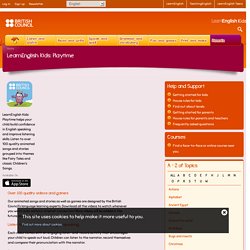

Spelling & Vocabulary Website: SpellingCity. Primary school shake-up to focus on ‘play-led’ learning. Children at primary schools would not study traditional subjects until as late as 10 years of age, under proposals being considered by policymakers. Instead, there would be a much greater emphasis on creative play during the early years of primary school, and broader areas of learning in later years. The reforms are based loosely on some of the features of top-performing education systems in countries such as Finland, as well as new research on how children learn. The proposals, drafted by the National Council for Curriculum and Assessment (NCCA), represent some of the biggest proposed changes to teaching and learning at primary level in more than two decades. They also seek to give teachers more flexibility and autonomy over the amount of time dedicated to key areas of learning.
Educators, policymakers and parents discussed the proposals at a conference in Dublin Castle on Tuesday as part of a consultation phase which continues until the end of April. Exciting opportunity. What to consider when teaching English in large classes. How many students do you teach?
Do you feel that your classes are too big? Author and education consultant Jason Anderson looks at the issues and offers some potential solutions. For many of us, our classes are larger than we would like them to be. They can present a number of challenges that teachers of smaller classes are less likely to face. But what exactly do we mean by large classes? Definitions of a large class What we label a ‘large class’ depends mostly on context and expectations. In this article, we will take the midpoint between these two figures. Where teachers work in large classes today Perhaps the two continents where teachers most commonly work in large classes are Africa (especially sub-Saharan Africa) and Asia (especially the Indian sub-continent and China).
This is not a uniform picture. Large classes are not unique to low-income countries. The challenges of working in large classes We can divide the challenges into two general areas: 1. 2. 30 Techniques to Quiet a Noisy Class. One day, in front 36 riotous sophomores, I clutched my chest and dropped to my knees like Sergeant Elias at the end of Platoon.

Instantly, dead silence and open mouths replaced classroom chaos. Standing up like nothing had happened, I said, “Thanks for your attention––let’s talk about love poems.” I never used that stunt again. After all, should a real emergency occur, it would be better if students call 911 rather than post my motionless body on YouTube. I’ve thought this through. Most teachers use silencing methods, such as flicking the lights; ringing a call bell—see Teacher Tipster’s charming video; raising two fingers; saying “Attention, class”; or using Harry Wong’s Give Me 5––a command for students to: Focus their eyes on the speaker, Be quiet, Be still, Empty their hands, and Listen. There’s also the “three fingers” version, which stands for stop, look, and listen. Below you’ll find a collections of lesser known techniques for all grade levels.
Quieting High School Students. Teaching large classes. This article suggests ways to help discipline, to use group work and to cope with limited resources. What are the challenges of teaching a large class? LearnEnglish Kids: Playtime. Over 100 quality videos and games Our animated songs and stories as well as games are designed by the British Council’s language learning experts.

Download all the videos to watch whenever you want, even without internet connection! More videos will be added in the future, so stay tuned! Listen then record encourages speaking Each video comes with an engaging listen-and-record activity that encourages your child to speak out loud. Games practise spelling and check understanding Challenging word and spelling games come with each song and story to help children learn and understand the words they see in the videos. Understand your child's progress in the parents' area View your child’s progress in the app in a locked parents area. Songs for kids. Short stories for kids. How to play Kahoot! Short stories for kids.
Oxford Owl from Oxford University Press. Welcome to our free eBooks collection, developed for children aged 3–11 years old.

Help your young child learn to read, and love to read, with our range of over 100 free eBooks. If you'd like to learn more about how to support your child's reading, visit our Reading and Phonics made easy pages. For information about our range of levelled books for schools, visit our Oxford Reading Tree page or explore our Read with Oxford pages to learn about our range of books designed to support reading practice at home. Not sure where to start? Check which level is right for your child with this simple test from Read with Oxford. All our eBooks are tablet-friendly. Browse the library sign up log in More books to support learning at home Biff, Chip and Kipper Our Read with Oxford series features the much-loved characters who have been helping children learn to read for over 30 years.
Songbirds Levelled phonics books from the fabulous Julia Donaldson, author of The Gruffalo. Read Write Inc. Bond SATs Skills.